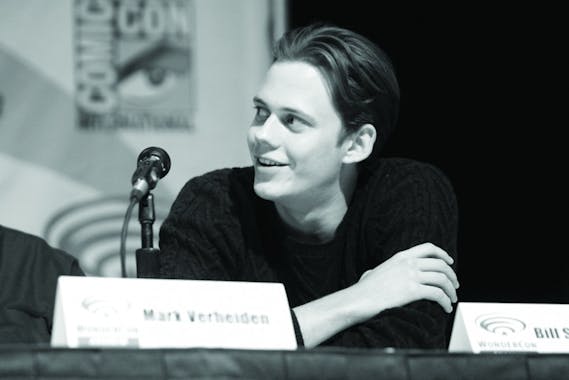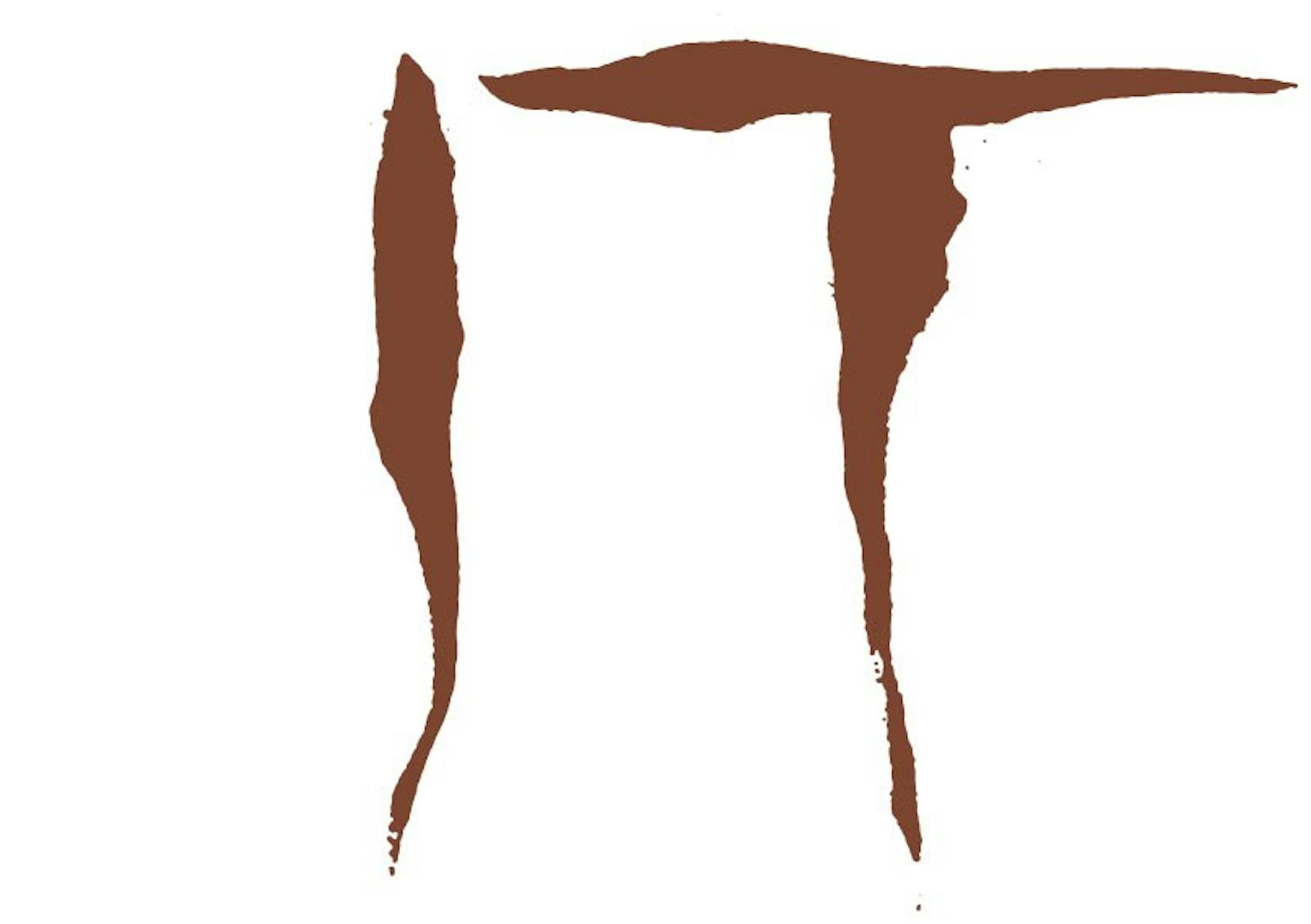Spooky Clown Wins Praise From Fan
Twenty-seven years ago, seven children nearly murdered a poor, delightful clown by the name of Pennywise in Derry, Maine. Two years ago, an incorrect and harmful documentary, IT Chapter One, was released into cinemas to wide critical acclaim and commercial success. While these homicidal toddlers claimed that Pennywise terrorized them and perpetrated many crimes linked to Derry’s missing children, the real Derrians understood that Pennywise’s only crime was giving out wonderful red balloons to rude ignorant children and seeking refuge in Derry’s sewer system. Today, the brutal gang known as the Loser’s Club returns to Derry to finish their crime once and for all. Hopefully, “[they]’ll float too!”

LOVE FROM FANS: Due to his excellent potraying of the clown, Bill Skarsgård received many Pennywise teddy bears from the fans, and he gave all of them to his eleven months old daughter.
For us non-evil clown mind-controlled folks, “IT Chapter Two” is directed by Andrés Muschietti, who once again proves that you should not mess with evil, shapeshifting clowns. Along with an expanded budget and a more expensive cast, Muschietti maximizes each resource at his disposal to create some of the most effective and disturbing imagery in recent memory. An ability to handle budgets of any size is essential in the film industry, and the fantastic makeup, visual effects and production design make Muschietti’s directorial skills excel.
The grotesque body horror and psychological assault on the subconscious reign supreme in that the sheer unsettling imagery plants the viewer into their most vulnerable and submissive state of mind. Muschietti recognizes the challenge of conveying fully-grown, scared adults as opposed to kids. The predatory nature of clowns is more sinister when projected towards innocent, naive children rather than independent citizens who have better things to do with their time. Pennywise is terrifying regardless of your age, and Muscietti masterfully crafts his horror around the insecurities of his characters. Toggling back and forth between the past and present, the members of the Loser’s Club recall the best and worst of their childhoods by reevaluating their current identities in relation to the goals and ambitions that they had as children and how much they truly changed since then or, in fact, stayed the same.
The adult cast provides worthy performances that elevate the work of the original crew. The characters’ evolved, yet still-recognizable personalities expertly mesh with one another as they recreate the nostalgic chemistry of their younger years. James Ransone stands out as one of my favorite casting choices; his Eddie Kaspbrak matches Bill Hader’s Richie Tozier perfectly through their back-and-forth and genuine compassion for one another. Muschietti veteran Jessica Chastain electrifies the screen as she immerses herself in the tragic, corrupt world of Beverly Marsh. Isaiah Mustafa hauntingly portrays Mike Hanlon’s evolution over the past 27 years. From obsession to insanity and desperation, Mike seeks to end IT by any means necessary. James McAvoy’s Bill Denbrough gives a subdued, subtle performance as he plays a man still haunted by grief and evil, desperately searching for clarity and normalcy. Andy Bean’s Stanley Uris is a welcome addition as his character fuels the integrity of the group through his honesty and sense of purpose. Lastly, Jay Ryan fills in sweet, old Ben Hanscom’s shoes as the guy who is going to respectfully ‘Rick Roll’ Beverly no matter what. However, Bill Hader’s performance and character journey of Richie Tozier hits the hardest and rings the loudest.
To no one’s surprise, Bill Hader is exceptionally funny and a brilliant impressionist and improv artist. But to fans of “Barry” and “The Skeleton Twins,” Bill Hader’s ability to convey complicated and repressed characters is a testament to his skillset and another example of how he adores and dedicates himself to his craft. Despite cracking hilarious jokes to add levity to this dark, grim tale, Richie Tozier’s character arc is the most compelling of all the returning ‘Losers’ as he struggles with his life-long compartmentalization of his sexuality. Despite not being referenced in the previous film or the novel itself (but has existed in numerous fan theories for years), Richie Tozeir’s secret adds another level of terror to the story, as the town he grew up in and the 80s culture that encompassed his way of life surpressed non-heterosexual identities. The film begins with a hate crime in present day not only to reignite the curse IT befalls upon the town of Derry every twenty seven years, but to highlight the dangerous world that Richie traverses throughout his struggle to recognize his inner thoughts and feelings.
Bill Skarsgård of course is the true star of “IT Chapter Two,” as his recent portrayal of Pennywise is iconic and a new marker for horror performances, makeup and special effects. Everything about Skarsgård’s Pennywise is unsettling: his tone of voice, the red lines on his face, his ‘I’m gonna eat you’ face. Pennywise is nothing short of magnetic and impossible to resist as every facial expression and illusion he conjures imprints itself on your brain, forever.
Unfortunately, while “IT Chapter Two” achieves great success through its emotional characterization and horror sequences, the film contains some extraneous storylines. Small-town bully Henry Bowers returns in the sequel but his presence is confusing and immediately forgettable. In Chapter One, Henry Bowers plays a crucial role, driving the protagonists to form the Losers Club. His murderous antics highlight the influence IT maintains over the citizens of Derry: over time the community grew to be immoral, oblivious and violent. And at a runtime of nearly three hours, the inclusion of Henry Bowers in IT Chapter Two fails to catch the viewer’s attention or maintain a sense of real-world tension. In addition to his sequences with the Loser’s Club, Pennywise continues to stalk Derry children and these scenes also feel somewhat unnecessary and disconnected from the story. Even within the primary storyline, the pacing struggles as the countless onslaughts of Pennywise versus Loser’s Club sequences get repetitive and predictable, as there are many independent characters that must face IT individually.
Overall, “IT Chapter Two” is an excellently crafted horror sequel that boasts strong performances and nightmare-inducing horror scenes. Despite some story and pacing issues, the film is a must-watch for hardcore fans and a positive recommendation for general audiences that are not afraid to dabble in horror.



Please note All comments are eligible for publication in The Justice.